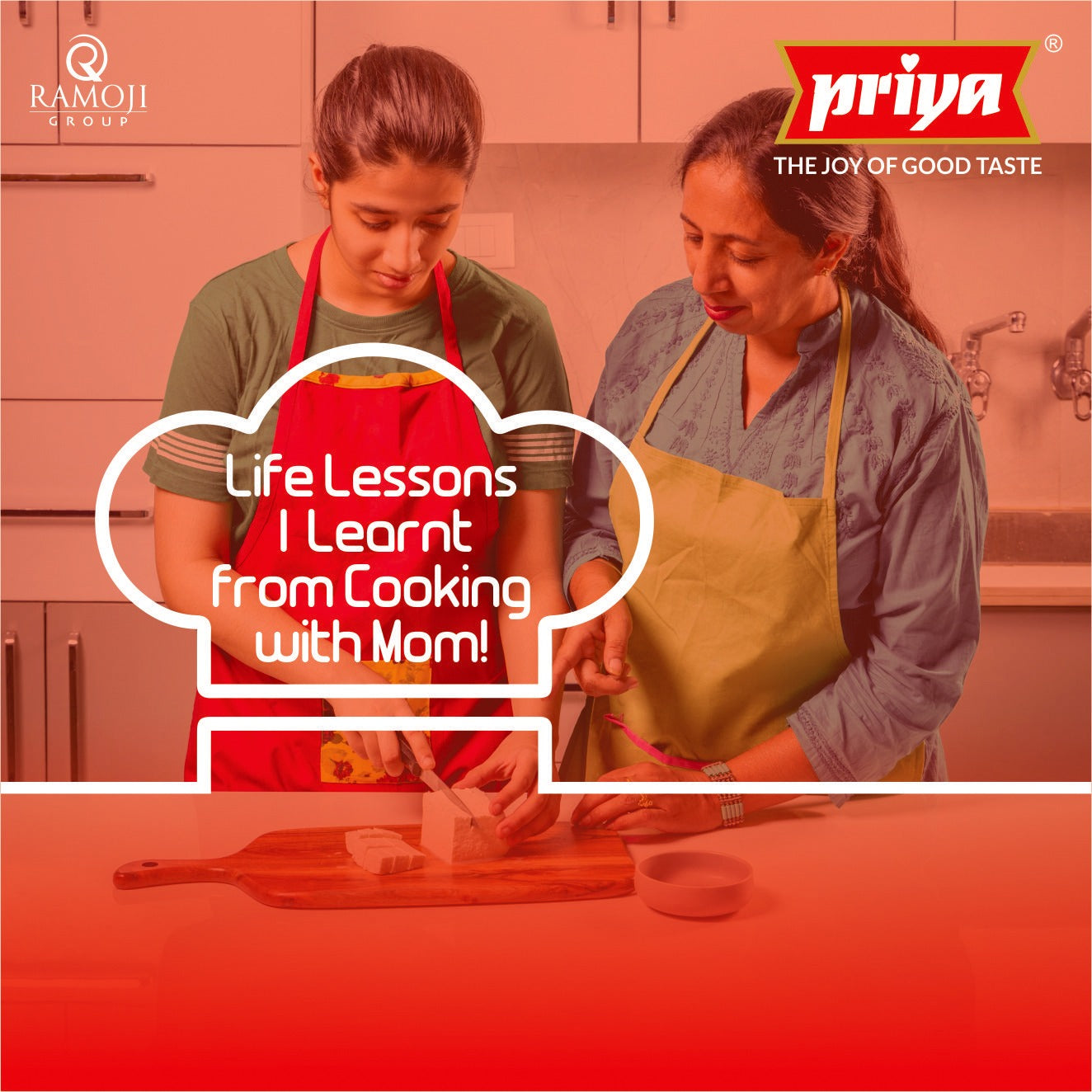Indian cuisine is a sensory gastronomic journey through a veritable tapestry of vibrant flavours, aromatic spices, and diverse regional traditions. From the simple home-cooked meals to the opulent feasts of royal kitchens, the culinary landscape of India is a treasure trove of gastronomic delights.
At the heart of Indian cuisine lies the ingenious symphony of flavourful spices that not only add depth and complexity to the dish, but also invest it with myriad health benefits and medicinal properties.
The pride of every Indian kitchen, big or small, is a well-stocked pantry that holds its own with poise and aplomb whatever be the occasion - an everyday meal, a festive feast, or a lavish party. In this fast-paced age where time is a precious commodity, pre-blended masala powders and pastes have become a saving grace for Indian women who strive to create delicious, old-world meals in a fraction of the time taken if started from scratch. These convenient culinary shortcuts have revolutionized the way traditional Indian dishes are prepared, allowing for both the preservation of authentic flavours and the convenience of modern living.
Come, let’s explore 7 must-have Priya Foods products that will take your Indian cooking to the next level. These pre-mixed spice blends are expertly crafted to capture the essence of time-honoured Indian preparations, ensuring that every dish is infused with the perfect balance of aromatic spices.
Hyderabadi Chicken Biryani Masala: Biryani, the crown jewel of Indian cuisine, is intricately intertwined with the rich Nizami culture. It reflects the opulence and grandeur of this bygone era known for its refined taste and love for lavish feasts. Priya’s Hyderabadi Chicken Biryani Masala, faithful to the age-old recipe, helps you recreate the same fragrant and aromatic flavours in your kitchen, effortlessly! This carefully crafted blend of spices and herbs including dry onion and garlic, coriander, chilli powder, cassia bark, turmeric and caraway seeds will infuse your chicken biryani with a burst of tantalizing flavours, ensuring an unforgettable dining experience.
Meat Masala Powder: Whether it's the slow-cooked curries, the smoky grilled kebabs, or the aromatic biryanis, their depth of flavours and textures makes Indian meat dishes a favourite of food enthusiasts around the world. If you are a meat lover, you will find that Priya's Meat Masala Powder is a game-changer. With its rich blend of spices – dry ginger-garlic-onion, pepper, caraway, mace, star anise, cassia bark, cardamom, cloves, turmeric and red chillies, and herbs – coriander, curry leaves, this masala powder helps you whip up an irresistible meat curry with ease and confidence.
Garam Masala Powder: Literally translating to ‘hot spice blend,’ garam masala is a staple in Indian kitchens. What makes it so versatile is its adaptability to different regional cuisines and the ability to complement a wide range of ingredients. While the exact composition can vary, garam masala typically consists of a harmonious blend of spices such as cardamom, cinnamon, cloves, cumin, coriander, and black pepper. Each spice contributes its unique character, resulting in a well-rounded and complex flavour profile. The beauty of garam masala lies in its ability to elevate both vegetarian and non-vegetarian dishes by providing a foundation of warmth and complexity.
Today, garam masala has found its way into contemporary fusion creations as well. Chefs worldwide too, have embraced garam masala for its ability to impart an exotic and enticing element to their creations.
Priya Foods' Garam Masala powder is second to none. Bursting with a medley of aromatic spices, proportioned to perfection, this versatile blend adds a warm and robust flavour to a wide range of dishes. Sprinkle it over your curries or use it as a finishing touch – its aromatic spell will weave its magic instantly and to elevate your dish into a culinary masterpiece!
Hyderabadi Vegetable Biryani Masala: Hyderabad's Nizams, known for their elaborate feasts and exquisite dining experiences, had their royal chefs create this version for their vegetarian nobility. Over time, Vegetable Biryani spread beyond the confines of the royal courts and gained popularity among the masses
Priya Foods' Hyderabadi Vegetable Biryani Masala is an essential item for every kitchen. Show off your vegetarian cooking skills with this exquisite blend of spices – dry garlic-onion, mixed spices, cassia bark, turmeric and chilli powder, and herbs – coriander, bay leaf, this masala powder which will make sure your vegetarian counterpart to the famous Hyderabadi biryani is as delicious and deserving of an ‘encore!’
Fish Fry Masala: With its long coastline India is a treasure house of seafood delicacies. From the tropical flavours of the coastal regions in the South to the spicy and aromatic creations of the East, Indian seafood dishes showcase a remarkable array of tastes, textures, and cooking techniques.
If you enjoy indulging in the flavours of the sea, Priya’s Fish Fry Masala is that secret key which will allow waves of deliciousness to embellish your seafood dishes. This special blend of spices enriched with mustard, cornflour, fennel and fenugreek adds a zesty and tangy twist to your fish preparations, making every bite a burst of delightful sensations. Whether you are pan-frying or deep-frying, this masala will ensure a perfectly seasoned and crispy fish every time.
Premium Sambar Powder: The origins of Sambar can be traced back to the South Indian state of Tamil Nadu. Interestingly, it is believed to have been created by the Marathas who ruled over parts of South India. An aromatic, tangy stew made from toor dal (split pigeon peas), tamarind, and a unique blend of vegetables and spices, Sambar is popular not only for its taste but also for its nutritional value. The combination of lentils and vegetables provide a protein-rich and balanced meal, making it a staple in South Indian households.
So no South Indian cook will ignore the savoury touch of sambar in his/her meal plan. Priya’s Premium Sambar Powder is an aromatic spice blend including coriander, rice flour, turmeric, red chillies, cumin, fenugreek, cassia bark, rice bran oil, asafoetida and curry leaves, that will immediately add depth and richness to your sambar preparation, taking it to a whole new level.
Noodles/Pasta Masala: Noodles from China and Pasta from Italy have been so wholeheartedly embraced by Indians that Indianised versions of these culinary imports are springing up at remarkable speed. Their journey of acceptance and integration into the Indian culinary fabric has been both fast and easy because of their being able to appease the palates of both kids and adults alike!
Priya’s Noodles/Pasta Masala powder is a unique blend of spices that manage to create a perfect fusion of Indian and foreign flavours to appeal to the discerning Indian palate. A perfect balance of coriander, red chillies, ginger, garlic, onion, black pepper, clove, cassia bark and star anise, ensures that this powder is just what you need to add a hint of spice and a dash of tanginess to your noodles/pasta dish and transform it into one that demands a repeat performance! What’s more…just a pinch of Priya’s Noodles/Pasta Masala can add a captivating twist to any Indian dish and turn it into an innovative wonder!
With these seven essential Priya Foods products in your pantry, you have a treasure trove of flavours at your fingertips. From biryanis to curries, from meats to vegetables, Priya Foods' spice blends add a touch of magic to your culinary creations. So go ahead, unleash your creativity in the kitchen and let Priya Foods navigate your course through the vibrant and diverse world of Indian cuisine.





















